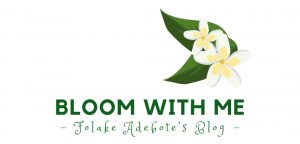The community libraries here are functional and easy to navigate. They are divided into sections that make it easy to locate whichever book you are looking for. The shelves are labeled and the books are color coded such that you can tell if the content matches your interests or values. When I visit the library I spend the most time in the kiddies section, it’s cozier. The books are categorized for different age groups, and as you would expect, those for infants and toddlers contain more pictures than text. The pages are also made of hard paper to prevent tearing. Pardon my oversharing; I just love how deliberate, inclusive, and self-maintaining the system is.
SA borrowed some books and got one for Ari. I was excited to read that it provided answers to curious children’s questions. As I flipped the pages I looked forward to learning simple ways to educate curious minds. The answers to the first two questions about why the ocean is blue and what rainfall is were: fishes cry blue tears and flying fishes are crying.

I was disappointed. There is indeed a species of fish that can fly/glide in the air for short intervals – the flying cod), but fish don’t fly nor do they cry.
While I understand that we’ve built an industry from fairytales and myths for kids and adults alike, I continue to ponder the hidden effects of the falsehood of fairytales. I am not talking about ‘happily ever after’ endings; these are not necessarily make-believe. I am talking about how we buy gifts for our kids and tell them it was Santa Claus rewarding their good behavior. Or that a fairy replaced their broken tooth with some money while they slept. I am no tooth fairy and I have no idea why we are swapping teeth for cash.
Indeed fairytales give room for imagination and kids feel a sense of ‘anything is possible for me’. But does it translate into creativity? Is it more empowering to feed a curious mind with falsehood, than to break down complex answers into the simplest possible truths?
In church, I interact with kids across different age brackets. I don’t teach them, I just love to have casual chats with them now and then. There is a beautiful 3-year-old called Dukia, and she talks. I honestly think she would laugh at me for being silly if I told her that flying fishes are crying.
With a prism, you can show your kid something that makes them marvel for days! The realization that inside light (sunlight or torch light) there are all these other beautiful colors – just like the rainbow. The seawater is like a prism (glass). Some of the colors enter into the sea and so we can’t see them, but the blue-like colors don’t enter, they stay on top of the sea, so we see only that.
picture from @bloesemkids
We need to stop acting like school is where discovery starts and ends. A hand lens, rubric cubes, and paint sets (which you may even make from your scrap) should be in your home just as paw patrol toys are. One afternoon after school, I must have been 7 or 8, I was playing outside the compound with other kids. One of our neighbors returned from work and asked me to follow her to her apartment. She had come home with materials that we (her 3 daughters, herself, and I) used to make embroidered handkerchiefs that afternoon. That experience has stayed with me ever since, knowing people did things like that in their homes.
You are probably thinking; the hustle for a livelihood is real and there is no time for this. Well, as parents we can choose the seeds we sow or not, but keep in mind that nothing extraordinary is convenient. It is common for parents to see a child prodigy and say; see your mate! But we don’t stop to compare parenting styles. And if you say that it is all about genetics and not nurture – the joke is on you.
There were three peculiar sisters in my secondary school. Each girl led her entire set from start to finish. The youngest of the trio was in my set, and she was the Head Girl in our final year (SS3). When as a group we had come to our wits’ end in solving a math, physics, or chemistry problem, we’d take it to this girl, and that would be that. It was the same with her sister before her, and their eldest sister before them. There wasn’t one subject where they weren’t leading. Three girls, one home; what was happening in that house? There had to be something the parents were doing and I doubt it included stories of crying fish.
Another thing that disturbs me about all these fairytales and magical fantasies for kids is this; in a Christian home how do we combine the teachings of God and His power, with Cinderella’s fairy godmother and the tooth fairy? How do you tell them to be good so they can get gifts from Santa Claus in December, but to also be good just because God says so? Isn’t it confusing?
Hmm… I don’t know. You decide.
Discover more from Bloom with FK
Subscribe to get the latest posts sent to your email.
